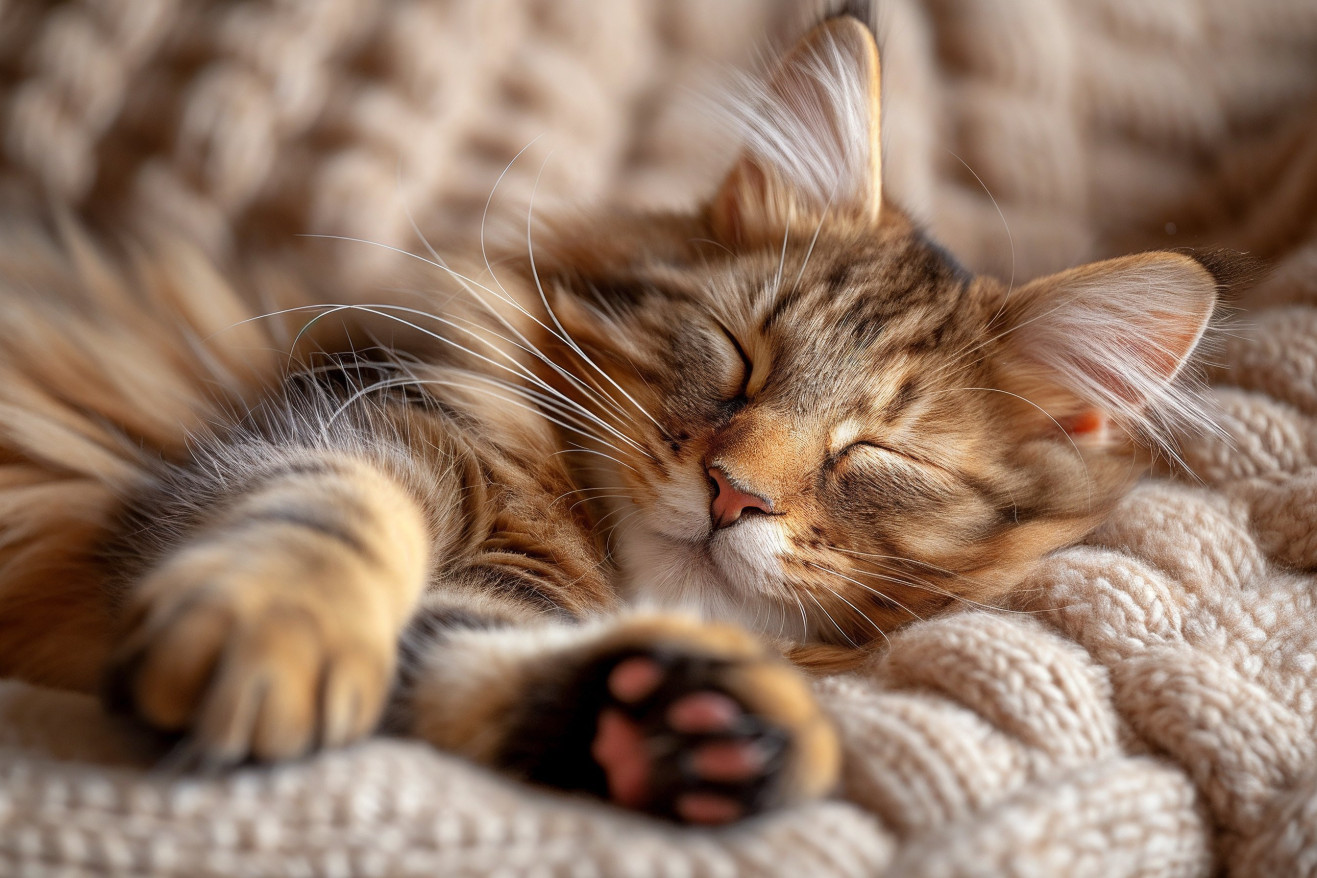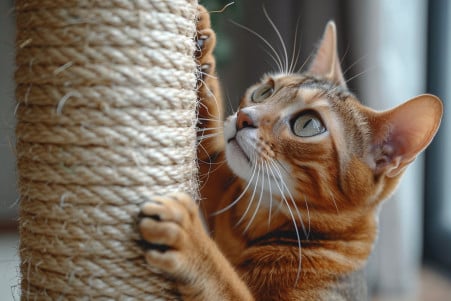How Many Toes Do Cats Have? A Look at the Number and Diversity of Feline Toes
4 February 2024

Cat owners may be impressed by their pet’s nimbleness, but how many toes do cats actually have? The average cat has 18 toes, with five on each front paw and four on each back paw. However, cats with polydactyly have extra toes due to a genetic mutation, and some may even have six or more toes on a single paw.
To take a deeper dive into the world of cat toes, we will look at research from veterinary science, genetics, and evolutionary biology. Along the way, we will learn about the complex factors that determine toe formation, genetic mutations like polydactyly, and the evolutionary factors that determine the number of toes cats have. This knowledge will help you learn more about feline anatomy and health while also satisfying your curiosity.
How many claws do cats have?
The Genetics of Polydactyly
Polydactyly in cats is a genetic abnormality that causes more than the usual 18 toes. This abnormality is caused by a mutation in the ZRS cis element of the Pd gene, which disrupts normal limb development by affecting the Sonic Hedgehog (Shh) gene. This can lead to a range of toe numbers in cats, with some cats having as many as seven toes on each foot, as was showcased in Basepaws’ Hemingway Cats celebration.
The inheritance of this genetic defect in cats is autosomal dominant, which means that only one copy of the gene is needed for the trait to be expressed.
A study in the Journal of Feline Medicine and Surgery notes that certain cat breeds, including the Maine Coon, are more likely to have this genetic mutation.
In addition to the scientific implications, the cat community is also interested in these special cats and often shares stories and images about them. Guinness World Records even has a listing for Jake, a ginger tabby with 28 toes, as an example of a particularly extreme case of polydactyly.
While polydactyly is generally not a problem for cats and doesn’t affect their ability to live a normal, healthy life, it does offer a unique look at the genetics of cats, a topic that also includes how cats’ senses work and how they communicate.
The Silent Language of Cat Claws
The cat’s paw is a masterpiece of biological engineering, adapted to a wide range of functions. At the heart of this adaptation are the claws, which are not only used for climbing and defense but also for communication and sensory perception.
The Tiniest Tiger notes that the structure of the cat’s paw, with its complex arrangement of bones, muscles, skin, and retractable claws, enables cats to move and stretch with great flexibility and silence, which is important for their predatory lifestyle.
In addition to the physical adaptations that enable cats to move with such grace and silence, cats also use their claws to communicate. According to an article in Felines, Pheromones, and Claws, when cats scratch objects, their interdigital glands in their paws release pheromones. These pheromones are used to communicate with other cats, mark territory, and create a sense of environmental security.
The claws’ sensory function is just as important. The pads of the paws, which are packed with nerve endings and sweat glands, act as sensory receptors, allowing cats to feel and respond to changes in their environment. This sensitivity is important for hunting and exploring and is integrated into the very nature of cat behavior through evolution.
Recognizing the many ways in which cats use their claws helps us understand the complex social structures and interactions that exist in the cat world, including the role of claws in non-verbal communication and interactions with the environment. The precision and adaptability of the claws illustrate the biological artistry that has gone into shaping them into an essential part of the cat’s survival and social toolkit.
The Evolutionary Biology of Cat Claws
The existence of claws in cats is a prime example of evolutionary biology at its best, with claws playing important roles in hunting, climbing, and self-defense.
The retractable nature of cat claws, which is a characteristic of many mammals, helps cats keep their claws sharp for hunting by keeping them retracted until they are needed, according to the blog The Tiniest Tiger. This retractability is controlled by a complex system of tendons and ligaments that make it possible for cats to sneak up on their prey without being detected.
The structure of cat claws has evolved differently in the many species of cats, from the common house cat to the lions and cheetahs. For example, while most big cats have retractable claws that help them with stealth and hunting, the cheetah has evolved semi-retractable claws that help them get a better grip as they run at high speeds.
These differences are the result of evolutionary pressures that have shaped the animals to meet the demands of their environment. As a review in PMC explains, thousands of years of evolution have shaped the complex structure of cat claws, including the keratin sheath and the bones in the toe.
This highly evolved system has helped cats not only become successful solitary hunters but also demonstrates how cats have adapted to different environments and hunting styles. The adaptability and effectiveness of cat claws are evidence of the success of cats in the wild.
Scratching Through Time: The Evolution of Cat Claws
The process of domestication has had a profound impact on the physical characteristics of the cat, including its claws. According to International Cat Care, the domestic cat (Felis catus) is descended from a lineage of solitary hunters, and domestication likely began in the Middle East around 10,000 years ago. This has led to questions about how the morphology of the African wildcat (Felis sylvestris lybica) changed as it became a house pet.
The number of claws, which has always been 18, has not changed, suggesting that natural selection, rather than human selection, has played a role in determining this aspect of the cat’s anatomy.
However, domestic cats have not changed much during the domestication process and still have the potential to live in the wild. This is reflected in their claws, which have maintained the size, shape, and function that would be most useful for a wild hunter.
Genetic research has shown that domestic cats and their wild ancestors have a lot of genetic overlap, which supports the idea that natural selection, rather than human selection, has shaped the basic design of a cat’s claws to ensure survival.
Even though living with humans has shaped some of their behaviors and characteristics, when we think about how domestication has impacted our pet cats, it’s clear that their claws are the result of an evolutionary history that has continued to benefit them in the present day.
Keeping the Purr-fect Pedicure: How to Take Care of Your Cat’s Claws
Your cat’s health and happiness depend on good claw maintenance. According to ASPCA Pet Health Insurance, regular trims every couple of weeks can help prevent painful ingrown nails, save your furniture, and lower the risk of scratches. To trim your cat’s claws safely and avoid splitting, make sure you’re using tools with sharp blades, and always have styptic powder on hand to stop any bleeding.
The Humane Society of the United States recommends that trimming be done carefully and slowly, making sure to avoid the quick. Meanwhile, offering a variety of scratching posts will help your cat keep its claws in good shape while also helping it stretch and mark its territoryan important part of its natural instincts.
The ASPCA calls declawing an amputation and warns against it due to potential long-term problems. Meanwhile, Paw CBD recommends using soft claw caps as a humane way to prevent scratching damage in indoor cats.
In summary, keeping your cat’s claws in good shape with regular grooming and making sure they have appropriate places to scratch is essential for their well-being. Regular maintenance will help make sure your cat’s claws are ready for whatever adventures and interactions they have throughout the day.
Thinking About Cat Claws
In the world of feline anatomy, claws are one of the most interesting and diverse parts of a cat’s body. The average cat has 18 claws, located on their paws, but the genetic mutation polydactyly can lead to extra toes, increasing the diversity of the species.
In addition to the number of claws, they play a role in a cat’s sensory and communicative systems, acting as a way to spread pheromones and interact with the world around them.
When we look at the evolution of these sharp little tools, we can see that they are an important part of a cat’s survival—used for predation, movement, and defense. The study of cat claws can also help us understand evolution, especially the way that natural selection has led to the evolution of retractable claws and claws that are as sharp as possible, both of which make cats better hunters.
For those of us who are responsible for these agile animals, understanding and taking care of their claws is important for their health and happiness. This means making sure that cats’ claws are trimmed and that they have scratching posts to use.
In the end, the diversity and importance of cat claws, both in terms of the number of claws and their uses, show how interesting the biology of our pets is and how important it is to their well-being.


